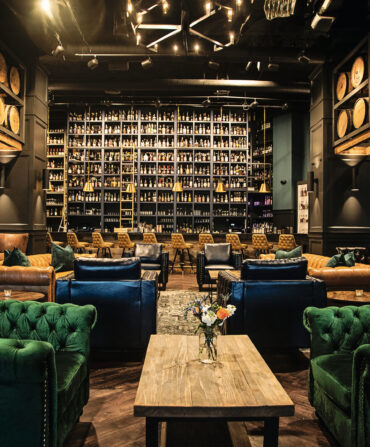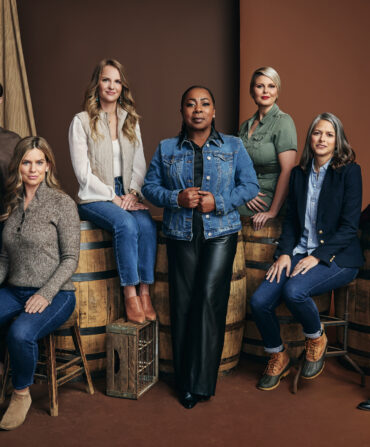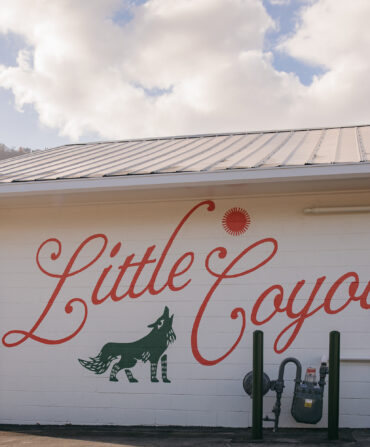Food & Drink
Scott Peacock Is Back in the Kitchen
Nearly a decade after leaving the pioneering Decatur, Georgia, restaurant Watershed, the chef is once again making his legendary biscuits—and this time he wants you to join in
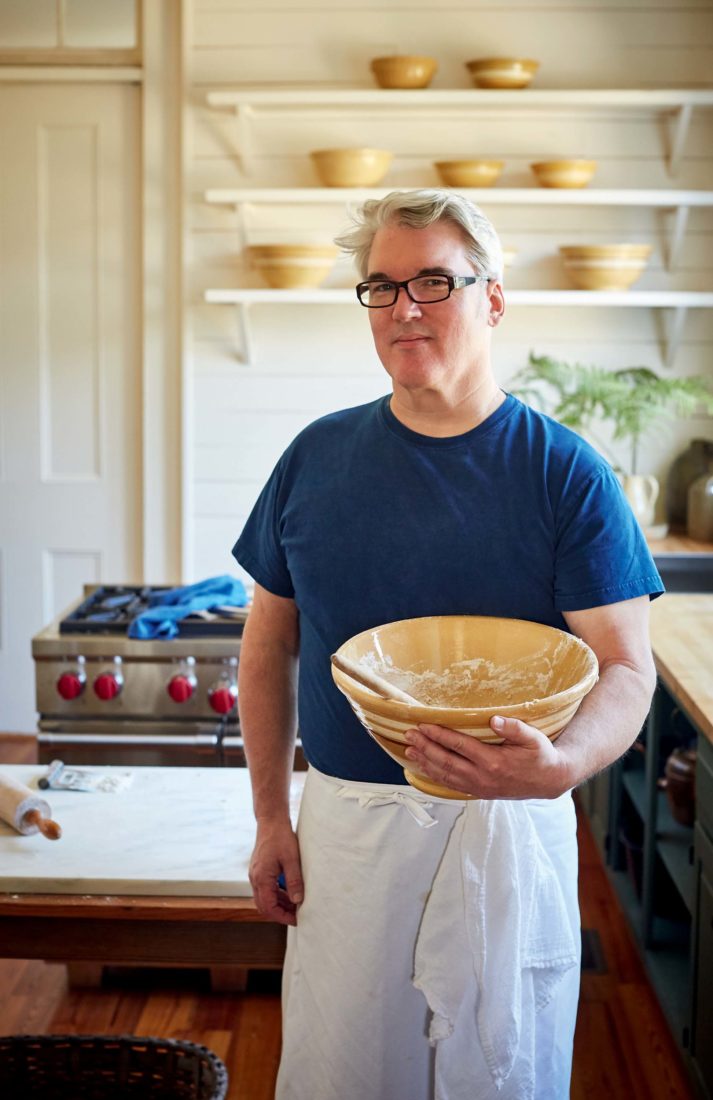
Photo: Jennifer Causey
“I call that counting the money,” Scott Peacock says, his hands deep in a vintage yellowware bowl and in constant motion. Four women, who have driven hours to the small town of Marion, in his home state of Alabama, to join him in the sunny kitchen of a historic mansion called Reverie, crane their necks. They look confused. Inside the bowl are two varieties of heirloom flour, homemade baking powder, kosher salt, and fat chunks of butter. Peacock takes a hand out of the bowl, rolls his eyes, and begins riffling imaginary bills in the air to demonstrate the technique. Everyone laughs (he’s a funny mime), and his hands dive back into the bowl to push the floury butter into shards.
Once he’s worked the butter into the dry ingredients, Peacock dumps in cold buttermilk and gives the dough a vigorous stir. “Look what it’s starting to do,” he says, inviting the women to come peer at the lumpy blob. “You are trying to develop some structure—see?”
“It looks like a brain,” one of them ventures.
The women are here for what he calls a Biscuit Experience, which results in so much more than a pan of glorious, inimitable Scott Peacock biscuits. It is actually three pans of biscuits, some to eat with butter and local wildflower honey, some with mayhaw jelly, some with fried country ham. But it is also a deep-dive history lesson, a hands-on session with a master, and a moment of Alabama Zen, the objects and the actions, the cook and the dish, part of a whole.
Once Atlanta’s most visible chef, Peacock had seemingly retired from cooking when he bought a house in Marion—a town of three thousand in Alabama’s Black Belt region—nine years ago. Last December he quietly posted a picture of biscuits on Instagram with the modest announcement that he planned to invite small groups to this rural community to spend four or five hours with him making biscuits. Word spread like melting butter on a steaming-hot cathead. Scott Peacock was back in the kitchen.
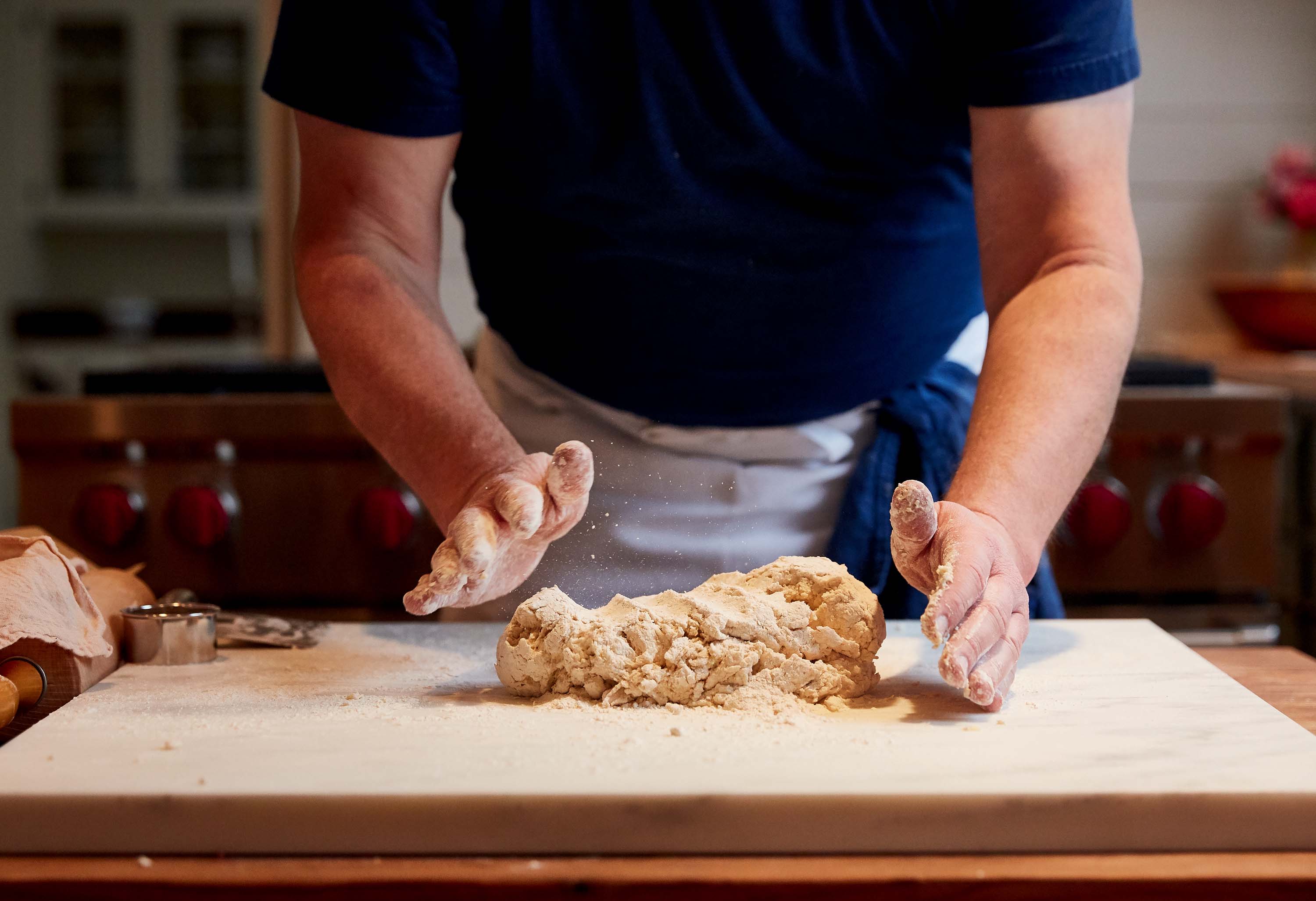
Photo: Jennifer Causey
Peacock’s practiced hands shape dough during a Biscuit Experience at Reverie.
Atlantans who recall Peacock’s tenure as chef at Watershed know that his biscuits weren’t served as a regular menu item but as an occasion: buttermilk ones at brunch, and flakier, more savory lard ones with his legendary Tuesday-night fried chicken. He was a skilled baker—his cornbread and “Very Good Chocolate Cake” counted among his standouts—but his real gift was in finding the right touch and tone that make simple cooking hard to forget. Every fan had a dish or two that went to the head of their list of food cravings. “For me it was the stewed tomatoes he put on his vegetable plate in the winter,” says Anne Quatrano, the esteemed Atlanta chef who introduced Peacock to the first-time restaurateurs (among them Emily Saliers of the folk-rock duo Indigo Girls) who opened Watershed in 1998. “He also made these awesome cucumbers with young leeks in season and a little mustard. Scott’s an incredible cook. He has such a strong attachment to food and its preparations, and he doesn’t stray. He’s one of the real purists.”
I first met Peacock the same year Watershed opened, after he had just ended a stressful job at the high-volume, high-decibel Atlanta restaurant Horseradish Grill. There, following a stint at the Georgia governor’s mansion, he had become a local celebrity. I was new to town, learning the city on the fly as I reviewed restaurants for the Atlanta Journal-Constitution. A mutual friend was staying at our house and invited him over to dinner. The day before, Peacock called with a request: Could Miss Lewis come?
“Miss Lewis” was Edna Lewis, legend—the woman whose books defined American country cooking for a generation and with quiet grace explored the primacy of the African American experience in every aspect of it. She was Peacock’s mentor and best friend as well as his flatmate at the time. I was awestruck at the prospect of meeting her but also wanted Peacock to know that we had not yet unpacked boxes and that we had three preschool-aged children who could pierce the ozone layer with their shrieking. I needn’t have worried. It was a grand evening, and I was struck by the wordless rapport that had developed between this young, gay, chatty white man and this taciturn, observant African American woman almost fifty years his senior. Miss Lewis, in a floor-length print gown and a headdress, stood by the stove while I cooked and then, during dinner, applauded the two older girls as they jumped in front of each other shouting, “Now watch me shake my booty!” Peacock sat next to the baby in her bouncy chair on the tabletop; she stared at him all night, mesmerized by his expressive, handsome face. “Does this child ever blink?” he asked.
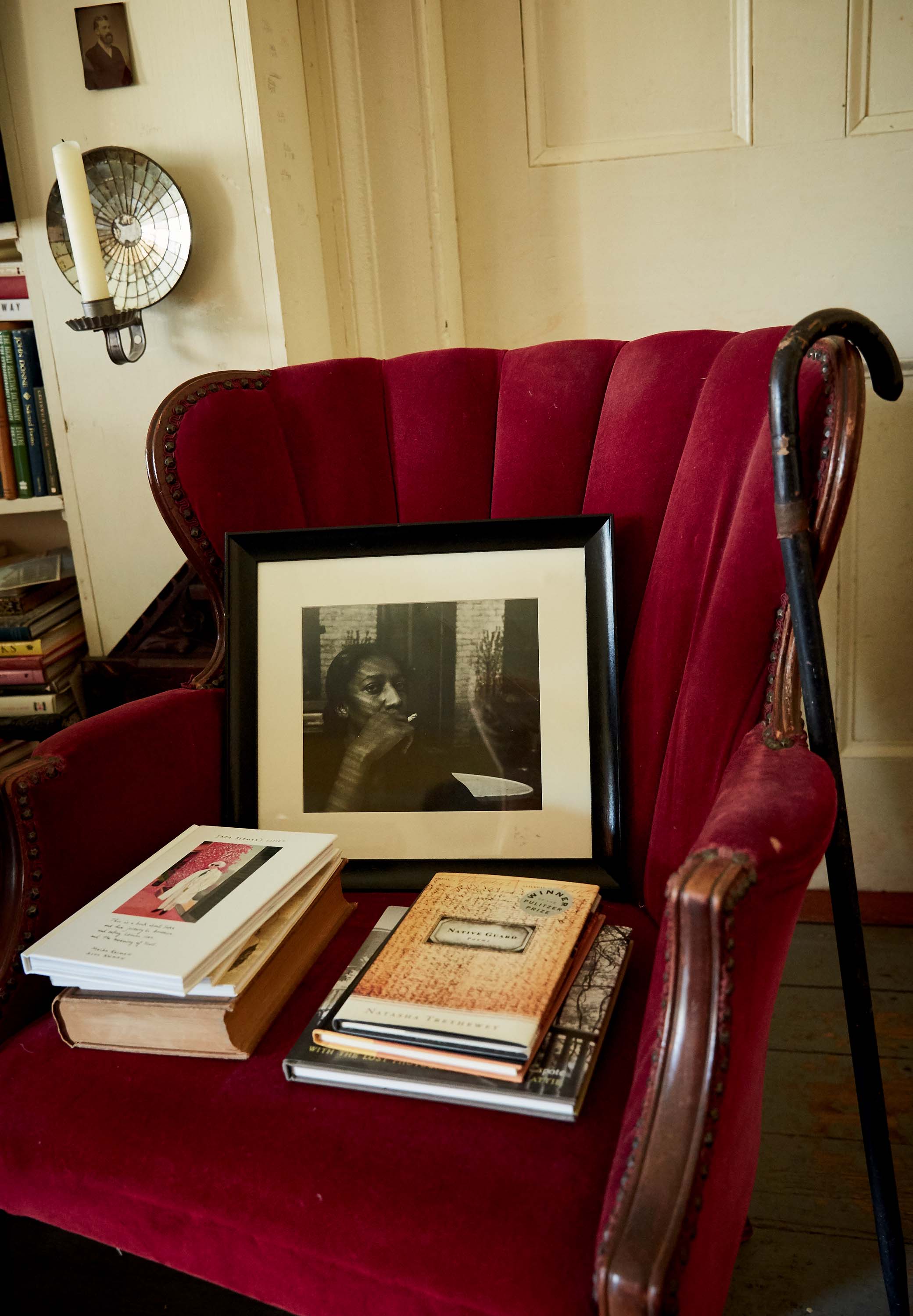
Photo: Jennifer Causey
A treasured portrait of Edna Lewis at Peacock’s house in Marion.
And he told me about Watershed, which was just getting ready to open in downtown Decatur. Primarily a wine shop and gift shop, it would have a to-go window from which customers could order a sandwich or a pastry to carry out or eat at one of the three tables set amid the bric-a-brac. He expected to consult for a month or so, but his real focus at the time was the manuscript for the cookbook he was writing with Lewis.
A year later, Peacock was still at Watershed. “I really enjoyed cooking without the pressure,” he recalls now. He could make the food that mattered to him, and guests responded. Additional tables had pushed aside the wine racks. The cards and flowers disappeared as the menu expanded to include a soulful seasonal vegetable plate with a wedge of custardy white cornbread, and a pulled chicken salad with radishes, snap beans, tarragon mayonnaise, and a halved farm egg that always came with a perfect gooey center. After a conversation in which he and Lewis had discussed a maligned Southern indulgence, they decided to rehabilitate it: Before Watershed, good pimento cheese had all but disappeared from the restaurant world. Peacock served it with lovely pale green celery, and it was easy to eat an entire bowlful.
Lewis was a regular fixture at Watershed, and the pair collaborated on the recipe for the fried-chicken special, which became so popular it caused Tuesday-night traffic jams in Decatur and sold out by 7:00 p.m. Here was the culinary past, suddenly alive again. “It was the first real artisanal Southern restaurant for me,” Quatrano says.
Watershed also worked as a lab for testing the recipes that would show up in their cookbook, The Gift of Southern Cooking, published in 2003. By then Lewis was becoming more frail, and Peacock had become her caretaker, hiring home health aides to minister to her when he was at the restaurant and traveling for the book. Lewis died in 2006, and the following year Peacock won the James Beard Award for Best Chef: Southeast. He wore chef fame easily, developing friendships with Alice Waters and Martha Stewart and showing up as a droppable name in the New Yorker’s Talk of the Town. In 2010, he announced his departure from Watershed to work on other projects, including two books—a cookbook and a memoir. In the following years, his byline showed up occasionally in food magazines, but the books never came, nor did another restaurant. As far as most people knew, he had disappeared.
With the four women gathered close, Peacock upends the biscuit dough onto a marble slab, which he says used to be a common tool in Black Belt kitchens. “When I was growing up in Hartford, Alabama, my meemaw would make biscuits with peanut oil. They were terrible,” he tells them. “My other grandmother, Grandma Peacock, was a great biscuit maker. But she was fearsome. She’d say, ‘Come give Grandma some sugar,’ then pinch my cheeks until I cried. At home we went to Pillsbury, to the can.”

Photo: Jennifer Causey
Peacock instructs pupils
on the finer points of biscuit making.
He chatters on, a font of biscuit lore: The heirloom Red May and White Lammas flours he buys from Anson Mills were, he says, among the original cultivars brought to Virginia in the 1600s (“That’s what gave rise to the biscuits, pies, and other foods the South is known for”); the dough should be worked, but lightly (“Most people are so afraid of overhandling it that they underhandle it”); he prefers a Southern rolling pin with rotors, not the solid French rolling pin that entranced him as a young man (“I was going to be a real chef, which meant a French pin—ha”).
This is his constant theme. He was so enamored with the France of his mom’s Julia Child cookbook and with everything Italian. Food was an escape. But it was Lewis who told him to cook what you know, study the place you came from.
He cuts the biscuits without twisting the cutter (the biscuits get more loft if you don’t compress the edges) and puts them on a parchment-lined sheet pan. He pulls off pieces of scrap. “Y’all come up and touch those pieces,” he says. Fingers poke into the soft wads. They don’t spring back, but they don’t don’t spring back. He arranges the rest of the raggedy dough on the pan with the biscuits. “You could reroll, but I like the rough pieces,” he says, slipping the pan into a hot-hot 500°F oven.
The smells of toasting flour and melting butter fill the kitchen at Reverie, which is a beautiful space. While the rest of the antique-filled mansion looks halfway between a house museum and a historically minded bed-and-breakfast, the kitchen offers a Quaker-esque celebration of plain, natural materials augmented by professional-grade equipment. Peacock designed it himself at the behest of Reverie’s owner, Hunter Lewis, an investment consultant and philanthropist who has bought and rehabilitated several historic structures throughout this part of Alabama as well as a six-thousand-acre organic farm. He and Peacock have plans to promote the Black Belt as a culinary and cultural tourist destination. Peacock has been growing heirloom wheat (mostly a variety called Purple Straw) on the farm, and says in a few years he’ll have enough to mill.

Photo: Jennifer Causey
Reverie’s columned entrance.
The light coming in the windows seems to filter itself so that the color of every item shows its best, richest side, none so much as the stack of dish towels on a sideboard. Most are royal blue or teal, hand dyed by Peacock with indigo he grew in the yard of his house, which sits around the corner from the mansion. At fifty-six, Peacock is as passionate about growing indigo and wheat as the young Peacock was about cooking. “It really is the same childlike wonder I had with food,” he says.
The toasting smell turns darker, more serious, and he pulls the biscuits from the oven. They have risen considerably and show craggy lamination on the sides. The few that cooked in the oven’s hot spot are mahogany. “Some people would be offended by those biscuits, but for others they would be the prize,” he says. “Miss Lewis would go for the darkest one.” Everyone in the room lunges for the misshapen scraps, or “leavings,” as Peacock says they are sometimes called. (“Southerners can be so wonderful when it comes to descriptive language.”) They taste tangy with buttermilk, sweet with butter, and of wheat so fresh it’s almost unfamiliar. We all have the same aha moment: That’s why you don’t reroll.
In the afternoon, the women take turns preparing and rolling batches of biscuits. Peacock has explanations for all the tiny decisions that generations of Southern cooks have learned through muscle memory. “I am going to correct you here,” he tells one woman who’s pressing her palm on the biscuit cutter. “You’re just making a vacuum and pushing the sides in.” Then: “Flour the rolling pin if you must, but not the top of the dough. I don’t abide floury biscuits.” He lightly fries thin slices of country ham and dresses a salad of chicories from the farm with persimmons from his backyard. After lunch, everyone lingers at the dining table in the room next to the kitchen, laughing and full, having eaten more biscuits than they could have anticipated.
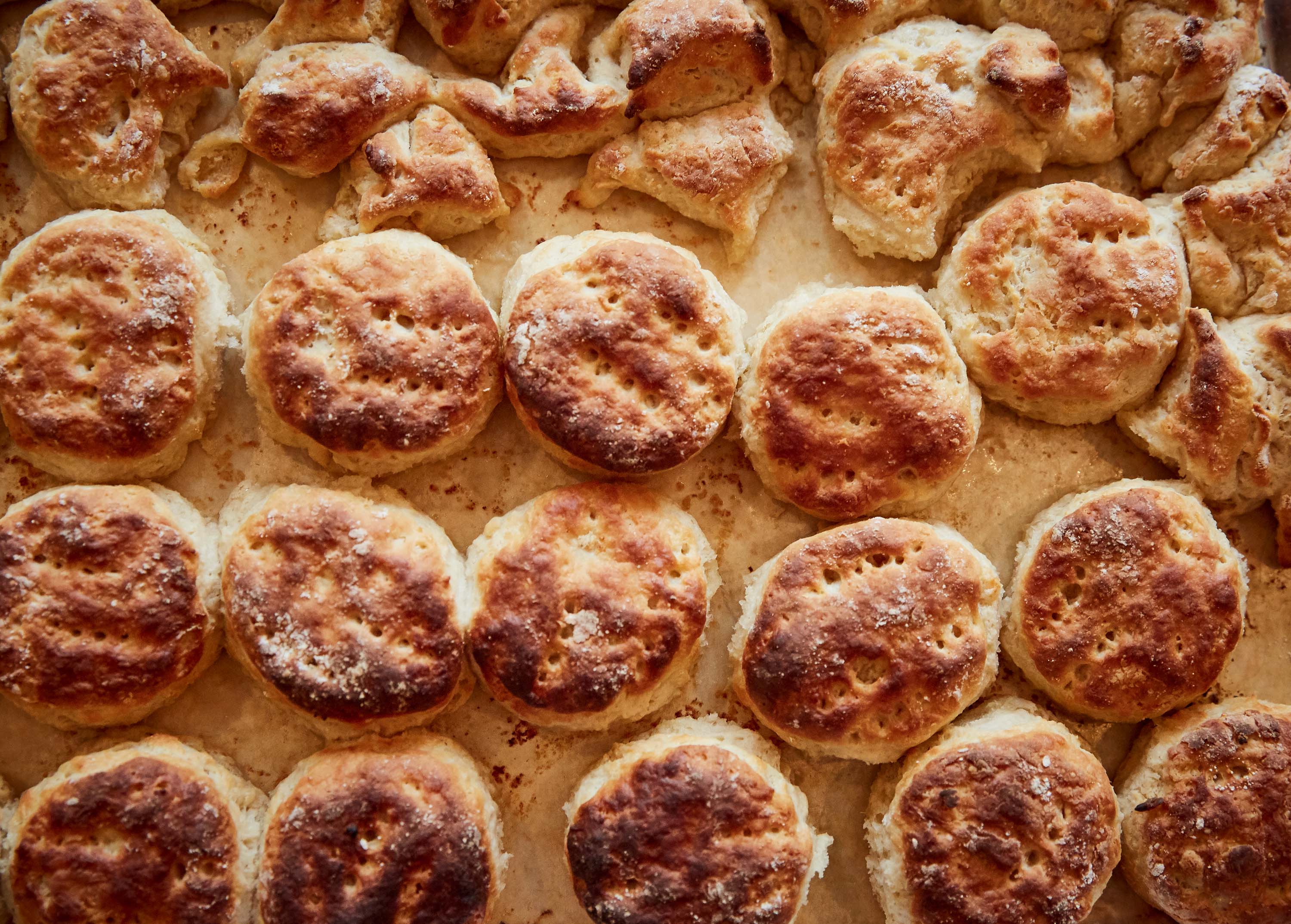
Photo: Jennifer Causey
Biscuits and “leavings,” fresh from the oven.
A year or so before he left Watershed in 2010, Peacock had begun a research project, traveling through Alabama with a videographer to interview old-timers and unearth their memories of food. He was already falling hard for the history and rolling-hill beauty of the state’s vast Black Belt when he laid eyes on Marion. The Black Belt region was named for the dark soil (so vastly different from the red clay of Peacock’s native Lower Alabama), but the name took on a secondary meaning for the huge population of enslaved labor working the cotton plantations.
Peacock knew that the town had played an important role in the civil rights struggle. The 1965 murder by a state trooper of peaceful protester and Vietnam War vet Jimmie Lee Jackson in Marion provided the impetus for the first Selma-to-Montgomery march. Additionally, civil rights icons Jean Childs Young and Coretta Scott King were born there. He also recognized it as the home of the Marion Military Institute, the school that his mother threatened him with when he showed signs of being “too creative.”
But he didn’t know how beautiful it was, filled with old homes, old trees, and old gardens that needed love. He first came to Marion while visiting the nonagenarian author Mary Ward Brown, who lived nearby and became a fast friend. Peacock remembers visiting a country store selling farm eggs and meeting a woman selling balls of freshly churned butter. He found himself drawn to the place, and with the encouragement of friends who considered it a smart investment, he settled on a handsome foursquare 1830 house just off the town square. It had suffered from decades of neglect, but it came with an acre of sunny, arable land.
At first the house was a part-time project, but it became a refuge and a calling. “The last three years of Miss Lewis’s life were some of the most challenging and stressful of my life,” he says. “I’d never felt so pushed to the edge. But it was also intensely meaningful. For the first time in my life, there was nothing more important that I should be doing, and I knew that with certainty. I will never forget that feeling and how deeply grounding it was.” He found through caregiving his internal compass, one that informed, he says, “every decision I’ve made of any significance, including buying a hundred-and-eighty-nine-year-old house in a small town in Alabama.”
I meet him there the morning after the biscuit lesson. While he has put evident care into the house, renovate wouldn’t be quite the right descriptor: making old things new isn’t in Peacock’s nature. He leads me upstairs to a canary-yellow room (“the original paint”) with a kiddie-pool-sized hunk of plaster missing from the ceiling. He stays mostly to a back salon and dining room filled with books and joy-sparking objects—a stuffed fox, an antique Corona typewriter, a picture of the young and beautiful Edna Lewis smoking a cigarette. His 1970s-era kitchen has mostly been given over to his indigo dye project. An index card with a quote from the writer Laurie Colwin—“No one who cooks, cooks alone”—hangs on a cabinet.
“Are you lonely?” I ask suddenly. In Atlanta, he had a reputation for being a social creature.
“Well,” he says, rolling his eyes and looking at Buddy, a doting black-and-white mutt who showed up in his yard one day and looks like a cross between a border collie and Sluggo from the Nancy comic strip, “I’ve got this one, so no, not really.” He likes his solitude, reading, talking to friends on the phone, and working on his memoir, which he says after ten years of stop and start is taking final shape. And he liked having the time away from the work of being famous, from always having to live up to the charisma that just kind of beams from him. He surprises me when he refers to himself as an introvert. “I have never looked back or regretted it,” he says of his decision to plant roots here. “I didn’t know what I would do here, but I knew I didn’t have to worry about that—that it would reveal itself.”
After a breakfast of corn muffins (made with Pollard white cornmeal, milled in his hometown), he takes me on a drive through the area. “This part of the Black Belt is so gorgeous,” he says, “though you can’t really tell now.” It’s a cold winter day, and he turns off the main road lined with border pines to show me hills dotted with deciduous trees and sudden expanses of plain. “My goal is really to make the Biscuit Experience the centerpiece of a day in the Black Belt,” he says as we pull into the nearby town of Greensboro—all faded grandeur, imperious antebellum homes, and gardens that will burst into color in spring.
He thinks there’s a hunger for it. Though he announced the Biscuit Experience barely a month before my visit, already he has received a steady stream of bookings. “I shouldn’t say this, but I know that part of it is people wanting to meet me,” he says. “But still. They’re curious about the Black Belt, and I’m just starting to think about all the events we can do one day.”
When Peacock talks about Alabama, about its conflicts and ugliness, but also about rediscovering its beauty—its food, farming, and architecture—I can’t help but think he’s also writing his own story out loud. He is a product of this place, and to be his best self is to reclaim it. Spending a day with him, your hands plunged into a bowl of soft heirloom flour, is indeed about much more than a few pans of biscuits.


